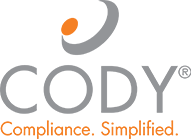3 Reasons the Conventional Method of Translating Member Materials Makes Project Managers Nervous
Project managers are highly organized, detail-oriented people. Some may admit to being control freaks, but that’s what makes them good at their jobs. This is especially the case for project managers responsible for coordinating a health plans’ member marketing communications, given the level of complexity, time-sensitivity and risk involved in creating and distributing these materials.
Producing and distributing accurate, on-time Annual Notice of Coverage (ANOC), Evidence of Coverage (EOC), Drug Formulary, and Summary of Benefits (SB) documents in English is a feat worthy of celebration. But health plans required to deliver member materials in additional languages must deal with another set of issues before the party can begin.
We call the conventional method of managing translations a “throw-it-over-the-fence” model. The health plan gives a translation company an English document to translate, the translation company does its work and then sends the translated document back to the health plan with an attestation of accuracy to the English source material. This process poses a few challenges that can disconcert project managers:
- Project managers don’t really know what process and protocol the translation company is following internally. They select a vendor based on its experience and reputation, but after that, the project manager is flying blind, trusting the translation company to do its job well, and typically only sees the translated documents at the end of the project.
- The production timeline for critical documents is extended. Because the translated versions can only be completed after the English language versions are approved, a couple of extra weeks may be tacked onto the AEP materials creation season. If a health plan is rushing to meet printing and mailing deadlines, these extra days for translated materials may cause mailings to be split across language lines, incurring expensive Priority Mail postage fees to get translated materials in members’ hands by September 30. Of course, expensive is better than late, since late delivery could result in sanctions or fines.
- Having a translation company use an iterative comparison process to essentially recreate a document originally written in English leads to a greater potential for errors in the material as the English language documents move through the editing and revision process. It’s also more difficult for project managers to ensure that revisions to the English document versions are captured and accurately updated in each of the translated versions. Inaccurate materials can lead to issuing costly Erratas, and increased exposure to CMS.
We’ve seen first-hand the frustrations health plan project managers experience in translating their member marketing materials to additional languages. So, we built a better mousetrap. The CodyPrint® team has developed a new methodology for translating member communications that gives projects managers peace of mind by providing visibility to the translation process, minimizing the production timeline, and eliminating the iterative processes that increase the opportunity for errors.
Click to read The Secret to Simplifying Health Plans’ Member Marketing Material Translations: A Parallel Project Path.
